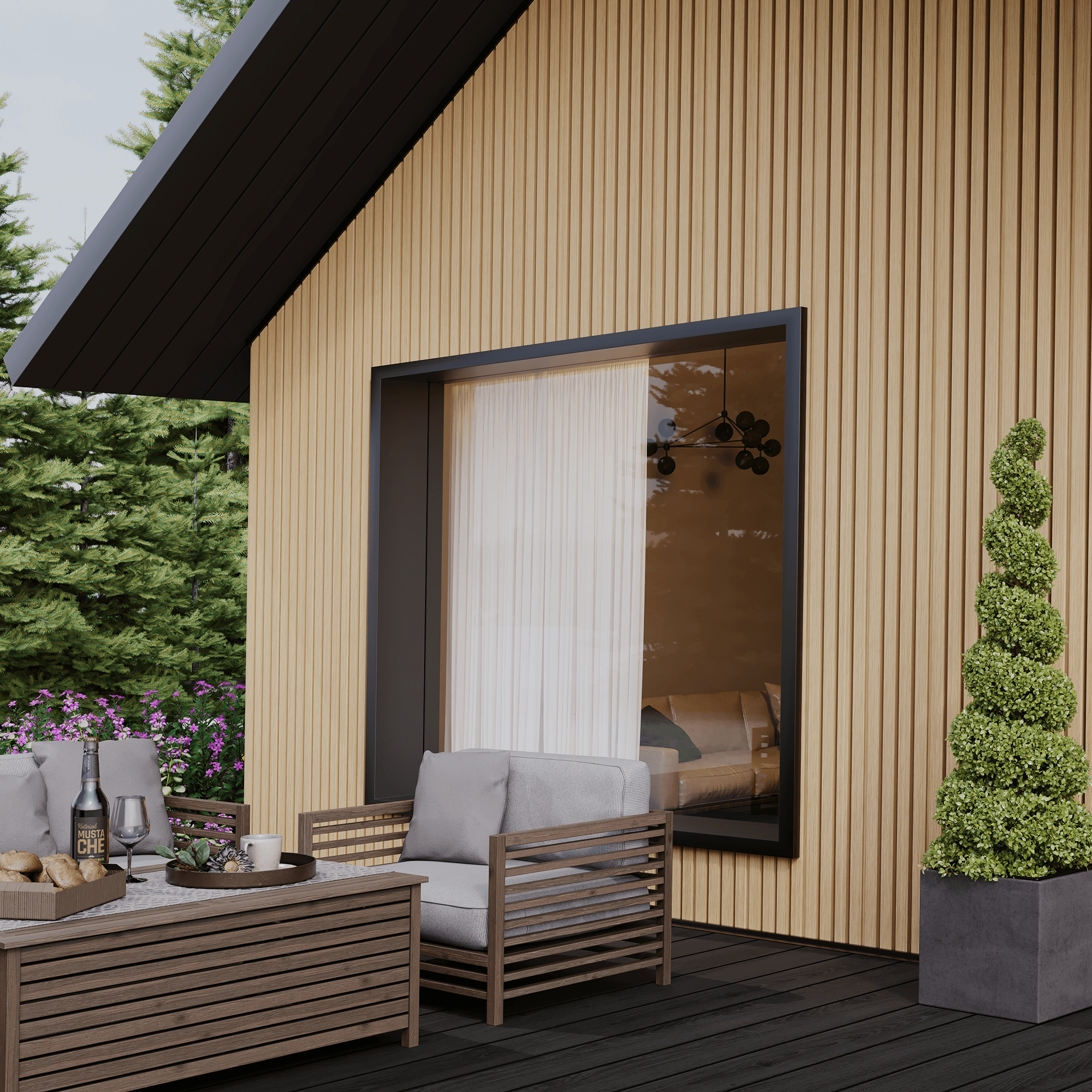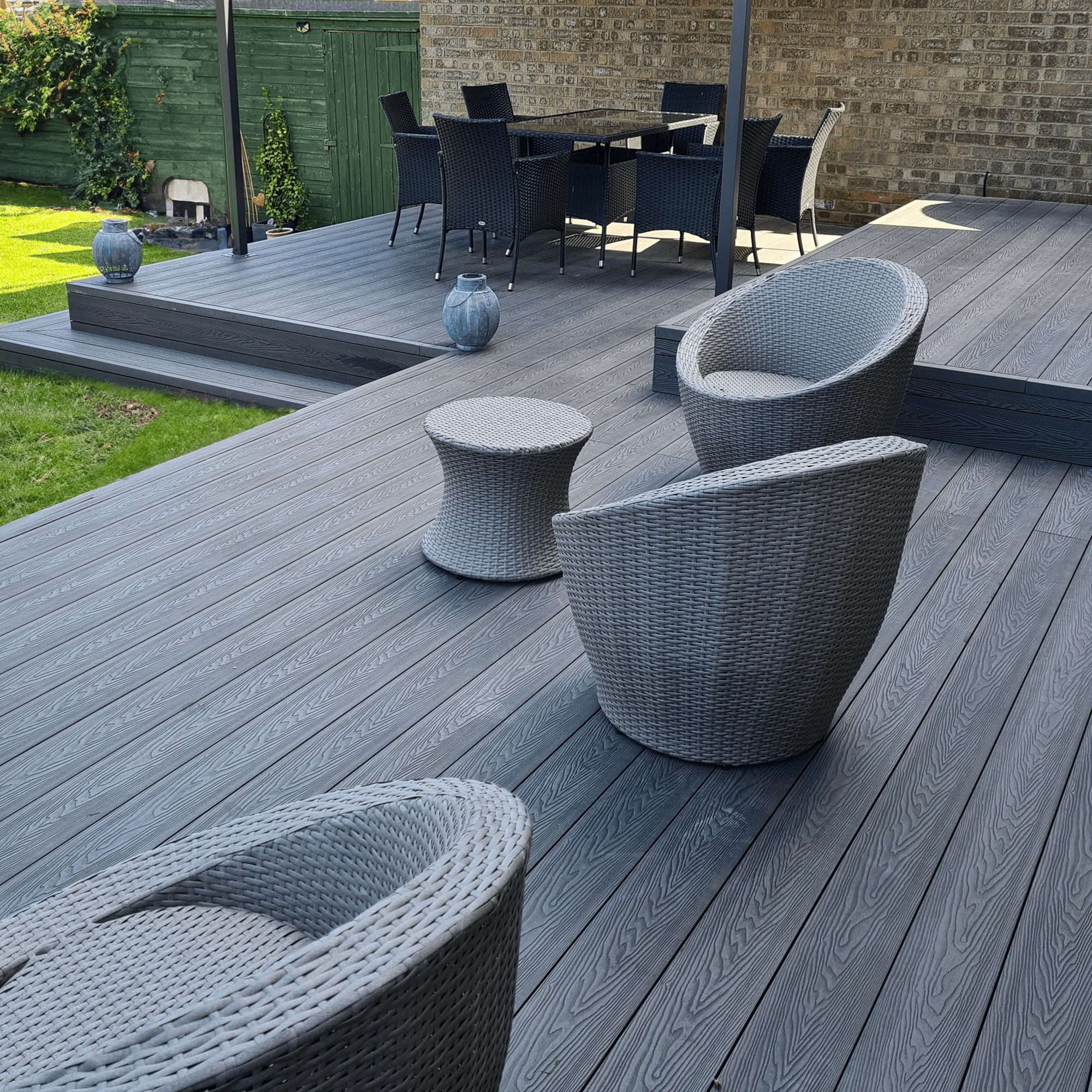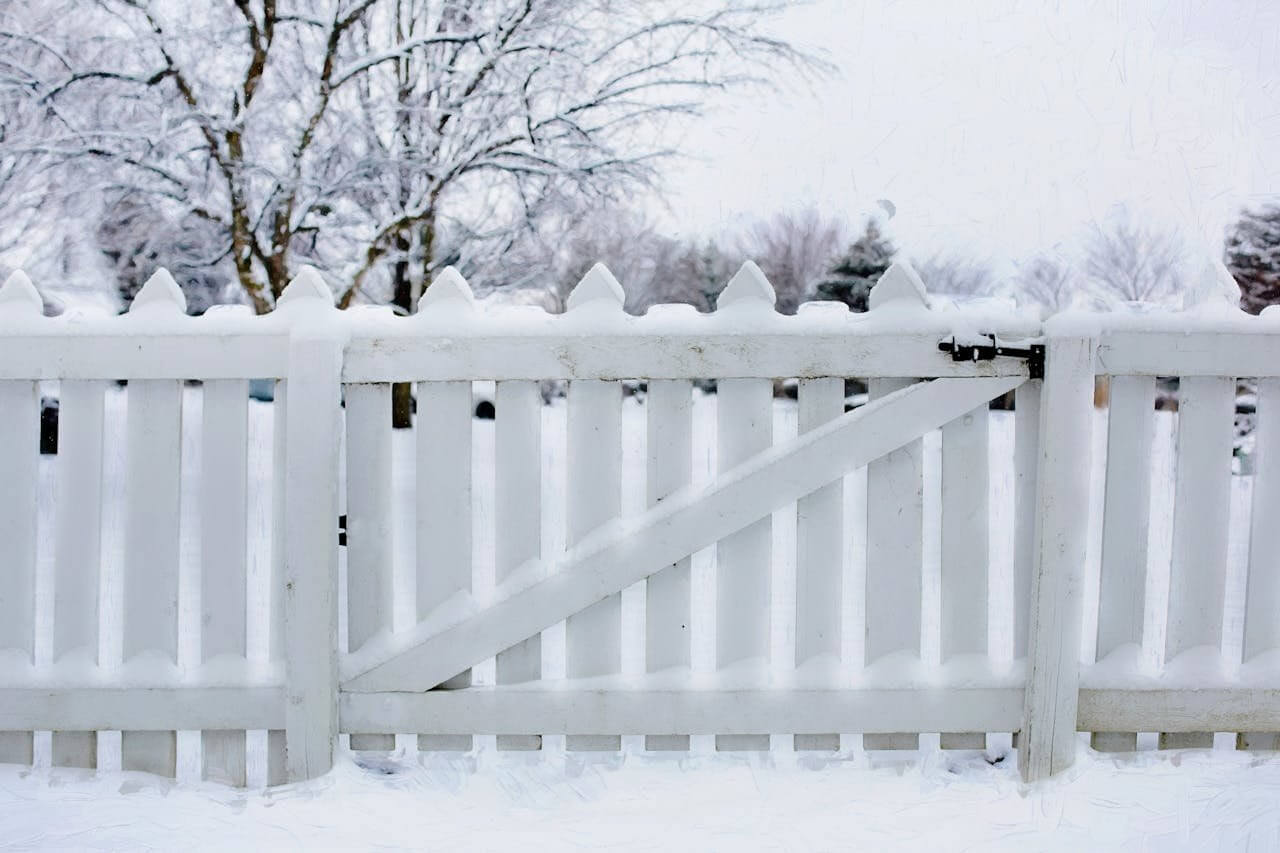
Do You Need Planning Permission for Cladding?
If you’re considering installing cladding on your home or in the garden, you’ve probably asked the question, ‘Do you need
Products in Stock
Lowest Prices
Express Delivery
10-Year Warranty
December Sale. Up To 15% Off.
If you’re thinking about installing a new deck, or replacing a tired or damaged existing one, you might be wondering about the types of decking available for your project. The first choice is whether to go for composite or traditional decking. There are pros and cons to these different decking types, but composite decking has a number of clear benefits. It is more durable than wooden decking, with a longer lifespan and lower maintenance requirements.
If you do decide to go for composite decking, there may still be different types of composite decking to choose from. Decking boards may be solid, hollow, capped or uncapped, and again, these different types of decking all have benefits and drawbacks. It’s important to know about the different options available before making a purchase, so this guide will run through everything you need to know…
When installing a new deck, choosing the correct decking type for your project can be a little overwhelming, but we’re here to help.
The two main types of composite decking are hollow and solid decking boards. Essentially, hollow decking boards have holes or pockets running through their length, while solid boards are solid all the way through.
Another choice is whether to go for capped composite decking or uncapped decking. All composite decking is durable and resistant to weather, but capped decking boards have an additional outer layer for even greater protection.
There can also be other options such as grooved or ungrooved decking boards, which we will come onto later.
Choosing the right composite decking for your garden may depend on a number of considerations, including cost, ease of installation, aesthetics and durability.

The difference between hollow and solid composite decking lies in the structure of the decking boards. Solid composite decking is solid all the way through. Hollow boards are not completely hollow, but they do have pockets running through the core.
Due to their solid construction, solid composite decking boards can be stronger and more durable than hollow boards. Hollow decking boards are still very tough though. The eco-friendly mix of recycled plastic and recycled wood fibre is designed for durability, and hollow composite decking boards can take heavy weights and resist wear and tear very effectively.
Due to the fact that they use less material, hollow decking boards also tend to be less expensive. They are also more lightweight and manoeuvrable, making them easier to install.
All composite decking is engineered to be durable and resistant to weather, warping, splintering, accidental damage, and general wear and tear. The composite material is tougher than traditional timber, but capped composite decking is even more durable. This is because it features an additional layer – the cap – that completely envelops the decking board on all four sides.
Dino Decking’s cap is a protective polymer shell using our own advanced Dino Shield™ technology. This provides the thickest layer of protection available on the UK market, with superior protection against water, mould, algae, scratching and other damage. It even provides extra UV protection to prevent colour fade.

Grooved and ungrooved decking can refer to a couple of different things. Firstly, it can refer to a groove running down the side of the decking board. This is essential for using hidden fixings to secure the decking boards to the frame. Without this groove, there will usually be visible nails, screws or holes from installation.
The other type of grooved decking has a series of grooves running along the upper surface of the decking boards. These can help water to drain from the deck, especially if a slight gradient has been built into the deck in the direction of the grooves. They may also help with grip. Ungrooved composite boards may have a more natural-looking wood-grain effect. At Dino Decking, our boards are reversible, so you have the choice of a grooved or wood-grain finish.
Dino Decking offers different types of decking boards in a range of colours to suit your budget and project requirements. From Premium boards capped with our advanced Dino Shield™ technology to our durable Classic range, we have all the composite decking boards and accessories you need.
Explore our full range to see what we have to offer, send off for your free sample pack, or get in touch with our friendly and experienced team for further help and advice.

Our sample pack contains a sample piece of each colour currently available. Order your free sample pack today to compare the colours and get a true feeling of the Dino Decking range!

If you’re considering installing cladding on your home or in the garden, you’ve probably asked the question, ‘Do you need

If you’re looking to go all out this festive season, you might be looking for some fantastic Christmas garden ideas